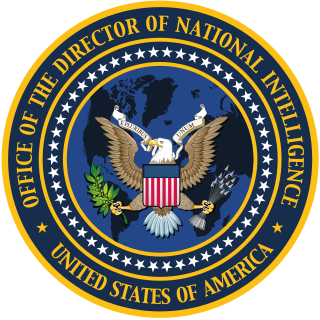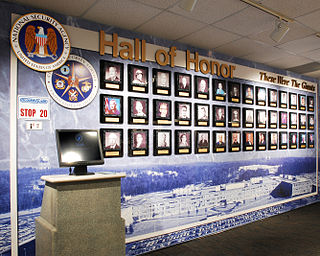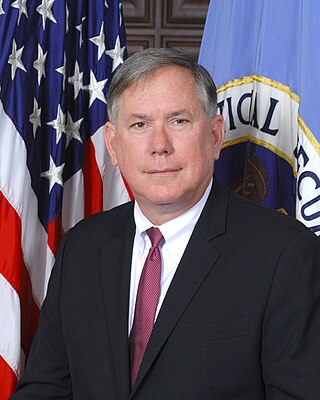
The director of national intelligence (DNI) is a senior,cabinet-level United States government official,required by the Intelligence Reform and Terrorism Prevention Act of 2004 to serve as executive head of the United States Intelligence Community (IC) and to direct and oversee the National Intelligence Program (NIP). All IC agencies report directly to the DNI. The DNI also serves,upon invitation,as an advisor to the president of the United States,the National Security Council and the Homeland Security Council on all intelligence matters. The DNI,supported by the Office of the Director of National Intelligence (ODNI),produces the President's Daily Brief (PDB),a top-secret document including intelligence from all IC agencies,handed each morning to the president of the United States.

The Central Security Service (CSS) is a combat support agency of the United States Department of Defense which was established in 1972 to integrate the National Security Agency (NSA) and the Service Cryptologic Components (SCC) of the United States Armed Forces in the field of signals intelligence,cryptology,and information assurance at the tactical level. In 2002,the CSS had approximately 25,000 uniformed members. It is part of the United States Intelligence Community.

William Bolding Black Jr. is a former Deputy Director of the National Security Agency.
The Signal Intelligence Service (SIS) was the United States Army codebreaking division through World War II. It was founded in 1930 to compile codes for the Army. It was renamed the Signal Security Agency in 1943,and in September 1945,became the Army Security Agency. For most of the war it was headquartered at Arlington Hall,on Arlington Boulevard in Arlington,Virginia,across the Potomac River from Washington (D.C.). During World War II,it became known as the Army Security Agency,and its resources were reassigned to the newly established National Security Agency (NSA).

The National Intelligence Distinguished Service Medal (NIDSM) is a decoration awarded for service to the United States Intelligence Community. The decoration is awarded to any member or contributor to the National Intelligence Community,either civilian or military,who distinguishes themselves by meritorious actions to the betterment of national security in the United States of America,through sustained and selfless service of the highest order.
Women in geology concerns the history and contributions of women to the field of geology. There has been a long history of women in the field,but they have tended to be under-represented. In the era before the eighteenth century,science and geological science had not been as formalized as they would become later. Hence early geologists tended to be informal observers and collectors,whether they were male or female. Notable examples of this period include Hildegard of Bingen who wrote works concerning stones and Barbara Uthmann who supervised her husband's mining operations after his death. Mrs. Uthmann was also a relative of Georg Agricola. In addition to these names varied aristocratic women had scientific collections of rocks or minerals.

Ann Zeilinger Caracristi was an American cryptanalyst,former Deputy Director of the National Security Agency,where she served at various positions over a 40-year career. She served as a member of the Secretary of Defense Joint Security Commission and President's Foreign Intelligence Advisory Board. She became the first woman at NSA to be promoted to GS-18 rank,in 1975,when she became the Chief of Research and Operations.

Scott F. Large is an American intelligence officer who served as the sixteenth Director of the National Reconnaissance Office from 2007 to 2009. He previously served as the Principal Deputy Director of the National Reconnaissance Office from April to October 2007,and as the Central Intelligence Agency's Associate Deputy Director for Science and Technology.

The Hall of Honor is a memorial at the National Security Agency headquarters in Fort Meade,Maryland. It honors individuals who rendered distinguished service to American cryptology.

Wilma L. Vaught is a retired U.S. Air Force brigadier general. She was the first woman to deploy with an Air Force bomber unit,and the first woman to reach the rank of brigadier general from the comptroller field.

Tiiu Kera is a retired United States Air Force (USAF) major general.

William Perry Crowell is the former Deputy Director of the National Security Agency from February 1994 to September 1997,during which time he was the highest ranking civilian in the agency,who oversaw management.

Gerald Robert Young was an American intelligence official who was Deputy Director of the National Security Agency from 1988 to 1990,under director William O. Studeman during which time he was the highest ranking civilian in the agency. During his time at the NSA he also held the position of Deputy Director for Plans and Policy.

Charles Richard Lord was an American intelligence official who was Deputy Director of the National Security Agency from 1986 to 1988 during which time he was the highest ranking civilian in the agency.

Robert Ellett Rich was an American intelligence official who was Deputy Director of the National Security Agency from 1982 to 1986 during which time he was the highest ranking civilian in the agency,working on internal management. He was also a "far east expert".

Robert Edwin Drake was an American intelligence official who was Deputy Director of the National Security Agency from 1978 to 1980 during which time he was the highest ranking civilian in the agency.

Benson Kirk Buffham was an American intelligence official who was Deputy Director of the National Security Agency from 1978 to 1980 during which time he was the highest ranking civilian in the agency.

Richard H. Ledgett Jr. is a former Deputy Director of the National Security Agency.
Diana Hayward Josephson was the first woman to lead the National Oceanic and Atmospheric Administration (NOAA) when she became the acting Under Secretary of Commerce for Oceans and Atmosphere in 1993.

Anne Neuberger is an American national security official who serves as the deputy national security advisor for cyber and emerging technology in the Biden administration. Prior to this role,she served for over a decade at the NSA,as director of cybersecurity,as assistant deputy director of operations and as the agency's first chief risk officer. She joined the federal government as a White House fellow,working at the Pentagon,and subsequently served as deputy chief management officer of the Navy,before joining NSA. Before entering government service,Neuberger was senior vice president of operations at American Stock Transfer &Trust Company.


















